Peter Bosch pays homage to The World’s Strangest Heroes…

My Greatest Adventure #80, the first appearance of the Doom Patrol, was published by DC on April 18, 1963 — 60 years ago! Dig this superb, celebratory column by Peter Bosch. But there’s more — we also have some EXCLUSIVE news for you: DC will be re-releasing My Greatest Adventure #80 as a Facsimile Edition this summer. Click here for all the fancy details. Right on. — Dan
—
By PETER BOSCH
Comparisons have been made in the past about the Doom Patrol and the X-Men. Was the Marvel mutant team just a copy of the DC group? My Greatest Adventure #80, the first appearance of the Doom Patrol, was released April 18, 1963, while The X-Men #1 came out two-and-a-half months later. Both groups were led by super-smart men in wheelchairs and — well, actually, that’s where the comparisons and arguments end. Oh, OK, there was also the fact that the Doom Patrol’s major enemy was the Brotherhood of Evil and the X-Men’s foes would soon be the Brotherhood of Evil Mutants. I subscribe, however, to the theory that the Doom Patrol was a copy of the Fantastic Four.
Both had genius leaders (Mr. Fantastic and the Chief). Both had super-strong men (the Thing and Robotman). Both had members with the power to stretch themselves to great length (Elasti-Girl/Woman and, again, Mr. Fantastic). Both had members who could fly (the Human Torch and the Negative Man). Both had members who were pilots and both had members who were race car enthusiasts. Both had three men and one woman. And, oh, yeah, they also both argued a lot among themselves. However, the Fantastic Four were in action two years before the Doom Patrol appeared.
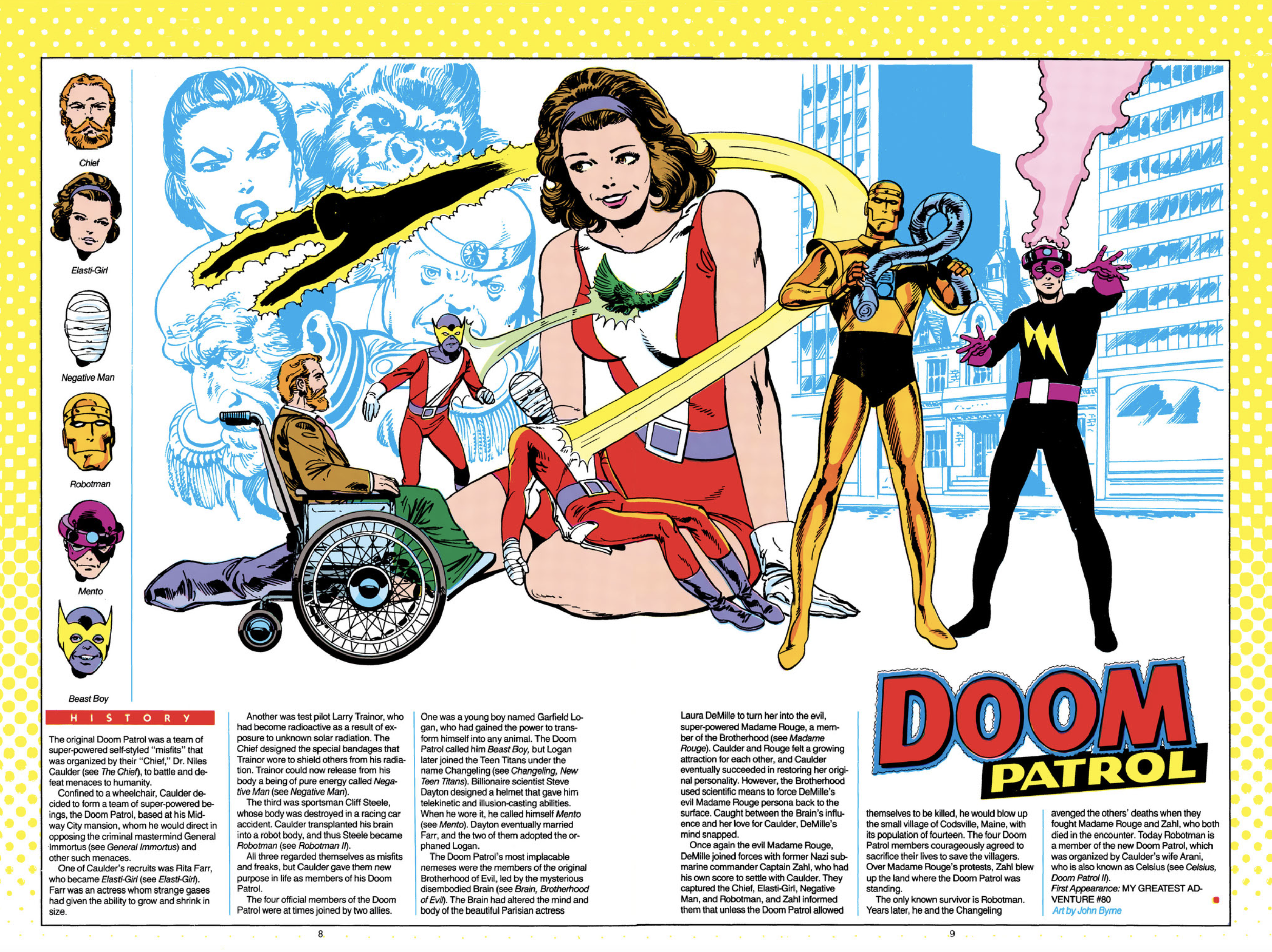
All profile pages from Who’s Who: The Definitive Directory of the DC Universe
Everyone knows who was part of the Fantastic Four, so let’s lay down who the Doom Patrol were, starting with “the Chief,” Dr. Niles Caulder, whose special mission in life was to stop evil beings from threatening mankind (he was in a wheelchair because of would-be world conqueror General Immortus). He recruited three others who considered themselves “freaks” of society.
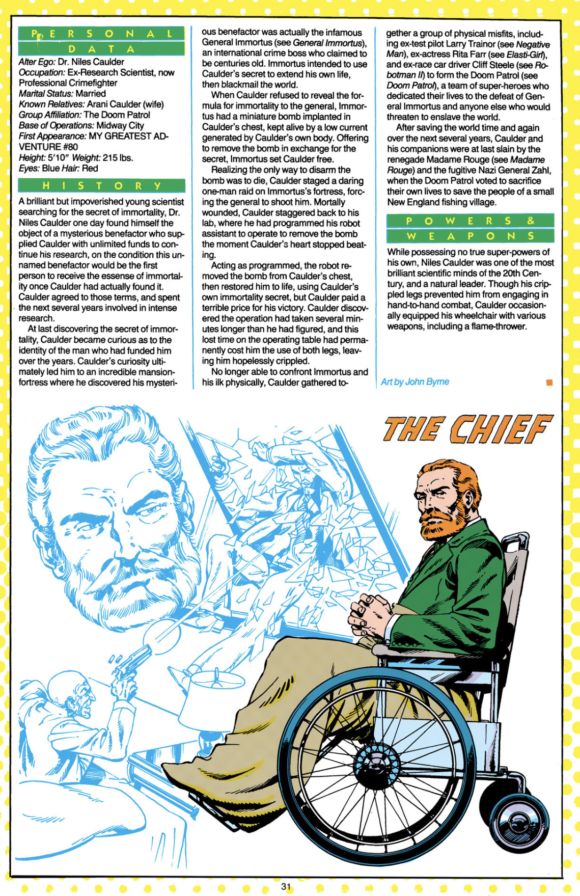
One was Larry Trainor, a test pilot, who encountered cosmic rays that filled his body with radioactivity, and he had to wear special bandages to keep it in check, plus he also had the power to release an energy being from his body that could fly around… but if it did not return to Trainor’s body within 60 seconds, Larry would die. Instead of being called the Radioactive Man, which was more appropo, he was named the Negative Man, after the energy being. However, Trainor could also have been called “the Transparent Man” because when his head bandages were removed, it was possible to see through his clear skin to the skull underneath.
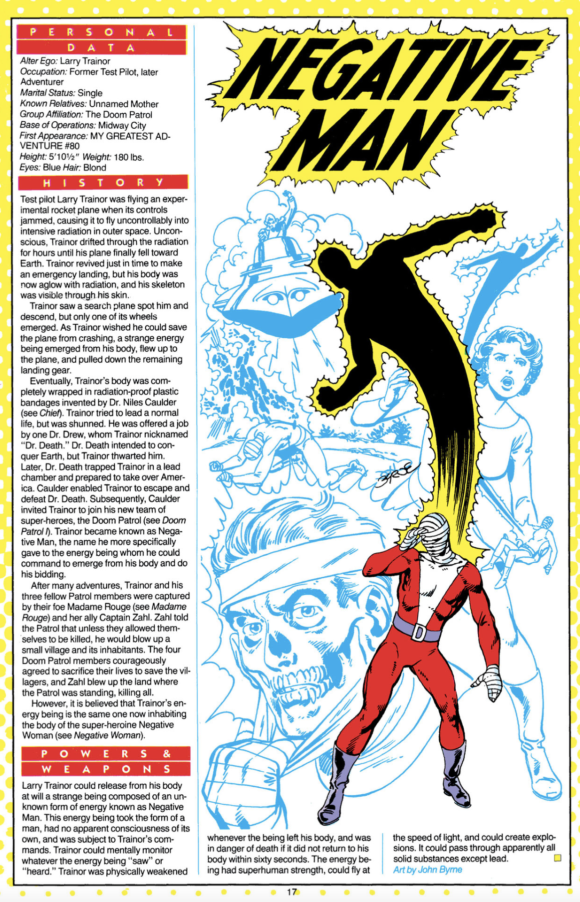
Then there was Cliff Steele, a rich daredevil who was so badly injured in a race car catastrophe that only his brain was still functional, so the Chief encased it within a robotic body, and Steele earned the name Robotman. (By the way, two things: 1. he was not the same character as the DC Golden Age hero who had that moniker first, and 2. for the first few stories, Steele was called “Automaton.”)
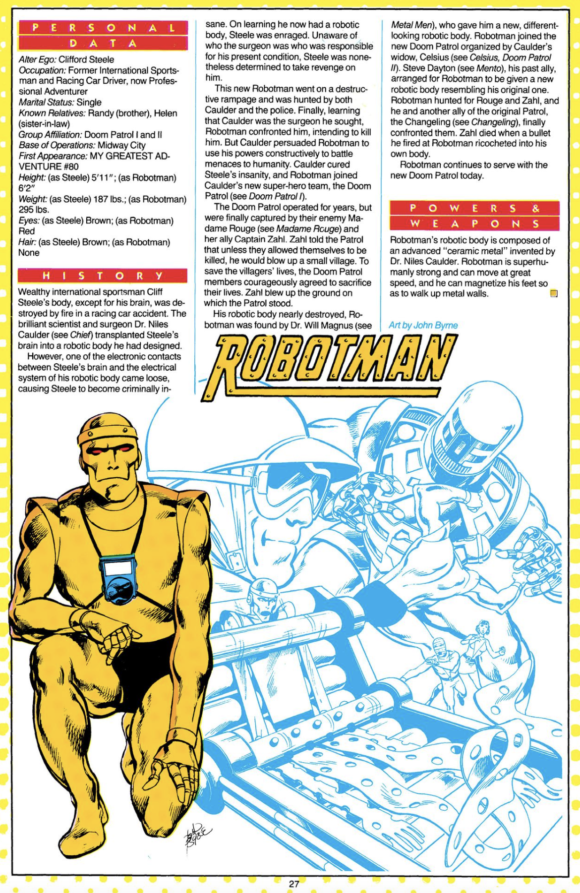
Lastly, there was Rita Farr, once a glamorous movie star, but while on location for a movie shoot she inhaled the dangerous fumes of a volcano and it affected her body’s physiology, allowing her to stretch any part of her anatomy. She could also increase her entire body to the size of a giant or shrink smaller than the size of an ant. She was given the name of Elasti-Girl, or sometimes Elasti-Woman.
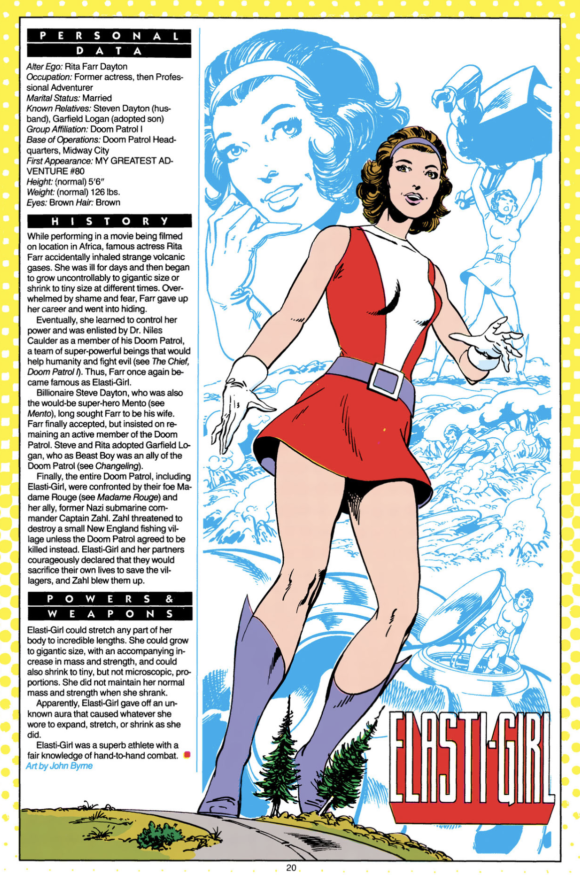
There you have them, the members of the Doom Patrol. And like the Fantastic Four, they were accorded hero status by the public despite their “freakish” abilities, not like a certain team of mutants which the public considered a menace to society (OK, Magneto didn’t help fix that image in his first appearance in The X-Men #1). And the Doom Patrol got to be who they were as a result of accidents, which was the way the Fantastic Four got their powers, not through mutant DNA.
Oh, there was one more person who sought to join the Doom Patrol. He was a kid named Garfield Logan, who was de-evolutionized by his scientist father into a West African green monkey in order to counter the effects of a deadly sickness. He turned green in the process and acquired the ability to become a copy of any animal, mammal, fish, or insect. He was as cantankerous a youth as any comic book had ever seen, but he still sought to become a part of normalcy, even if it was with a group like the Doom Patrol.

However, the Chief rejected his request because he did not have the permission of his guardian, a greedy villain who made Snidely Whiplash look sweet. While Gar Logan was nicknamed “Beast Boy” at the time, he would go on to change his name to “Changeling” and become part of the New Teen Titans. (His original name came back due to the popularity of the Teen Titans animated series.)
Another character introduced was the wealthy (where did all these rich people come from?) Steve Dayton, who wore a helmet to increase his mental abilities and, when in costume, went by the superhero name Mento. He was the one truly-odd character to appear in the series, with the helmet making him look geekish, and yet he was able to win the heart of Rita Farr and marry her. Later, with Gar’s guardian out of the way, Dayton and Farr adopted the boy.
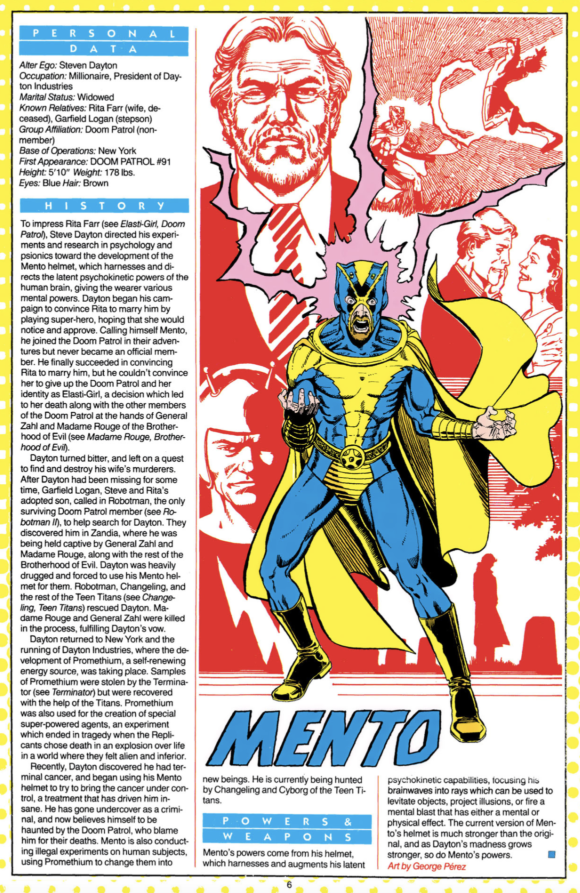
The Doom Patrol was created by writers Arnold Drake and Bob Haney and artist Bruno Premiani. And while the Doom Patrol were definitely not as popular as the FF, they did have enough readers of the first six issues to warrant the comic’s title being changed to The Doom Patrol starting with #86 (Mar. 1964). The comic’s fans who would write words of praise to the letter columns included Dave Cockrum and Mike Friedrich, both of whom would soon become pros.
The Doom Patrol continued on through the next few years; however, with decreasing sales the decision was made to cancel the series… but in a way completely different from other titles. Unlike other heroes who generally faded into obscurity after their series came to an end, the Doom Patrol went out with a bang (literally) in Doom Patrol #121 (Sept.-Oct. 1968). They (but not Gar) were stranded on a remote isle, where Niles Caulder’s old enemy, Captain Zahl, wanted to show the world the Doom Patrol were cowards. He told Caulder and the team they could stay where they were and be blown into atoms, or they could be allowed to leave and a Maine small fishing village of 14 people would suffer their fate, instead.
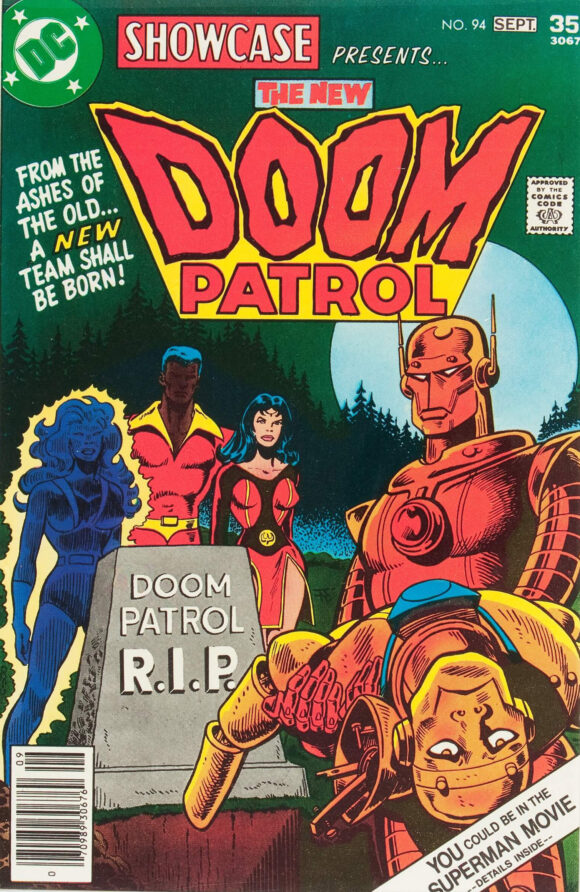
Jim Aparo art
The Doom Patrol basically told him where to go, and they stayed on the island… which the bad guy did destroy, along with the members of the superhero team. In the last panel of the story, editor Murray Boltinoff told the reader that the fate of the Doom Patrol was up to them. (It was supposed to be writer Arnold Drake, but he left to join Marvel before it went to press and the alteration was made.)
Well, clearly the readers didn’t come through, because the heroes remained dead. Five years later, there were a trio of reprint issues, but that was it — until Paul Kupperberg and Joe Staton’s Showcase #94 (Aug.-Sept. 1977), when Robotman, who survived and was restored by Dr. Will Magnus, discovered a new team inhabiting the Caulder mansion. But that’s a story for another day. (As well as the numerous retcons of the Doom Patrol since then, including the TV program.)
In the meantime, enjoy THE DOOM PATROL: A 60th Anniversary Salute in 13 IMAGES:
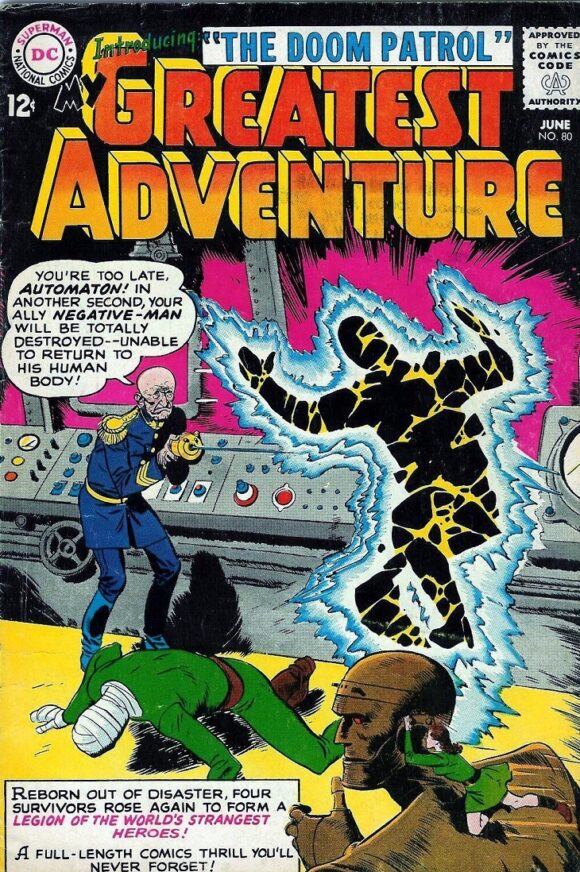
My Greatest Adventure #80 (June 1963) – Bruno Premiani art

The Doom Patrol #86 (Mar. 1964) – Pencils: Arnold Drake and Bob Brown; Inks: Bob Brown.

The Doom Patrol #87 (May 1964) – Bob Brown art
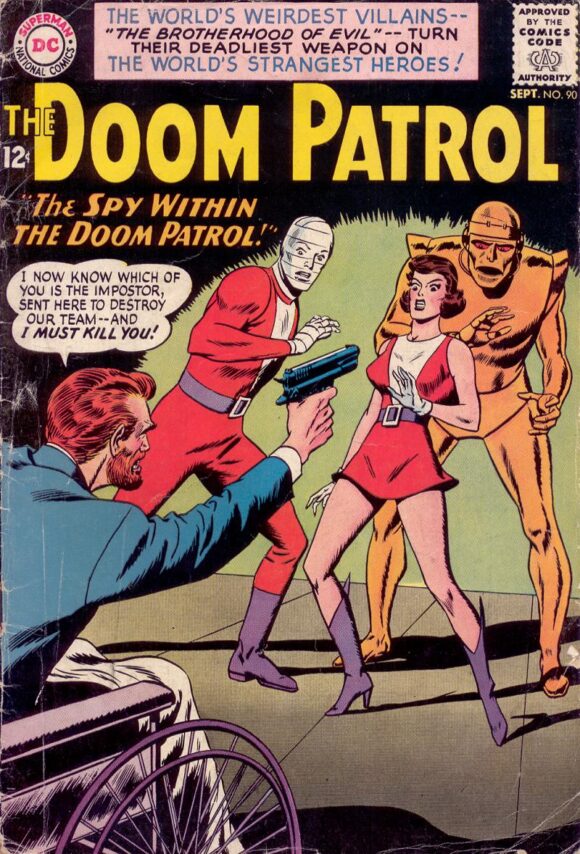
The Doom Patrol #90 (Sept. 1964) – Bob Brown
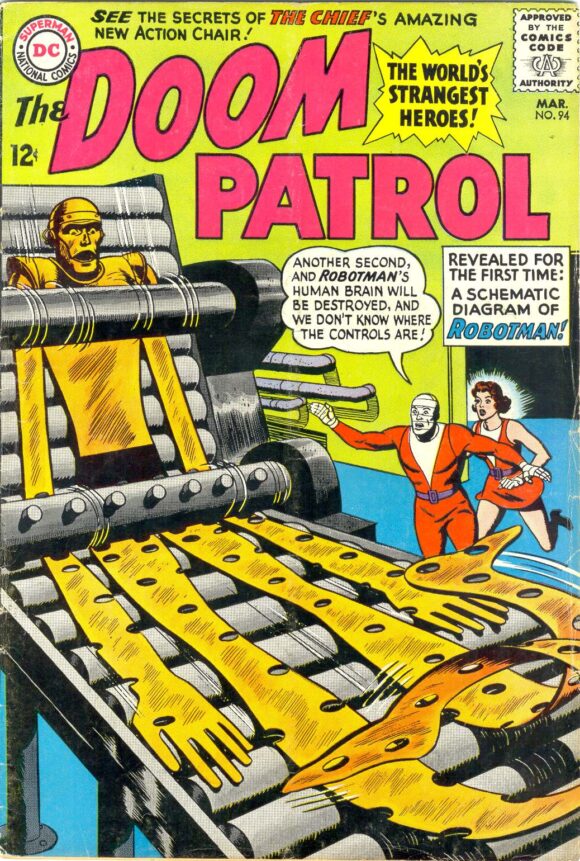
The Doom Patrol #94 (Mar. 1965) – Bob Brown
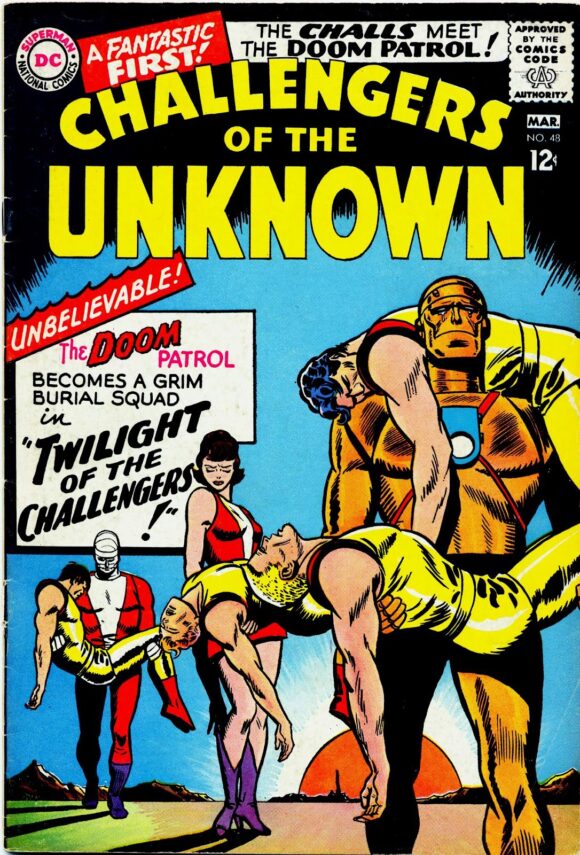
Challengers of the Unknown #48 (Feb.-Mar. 1966) – Bob Brown
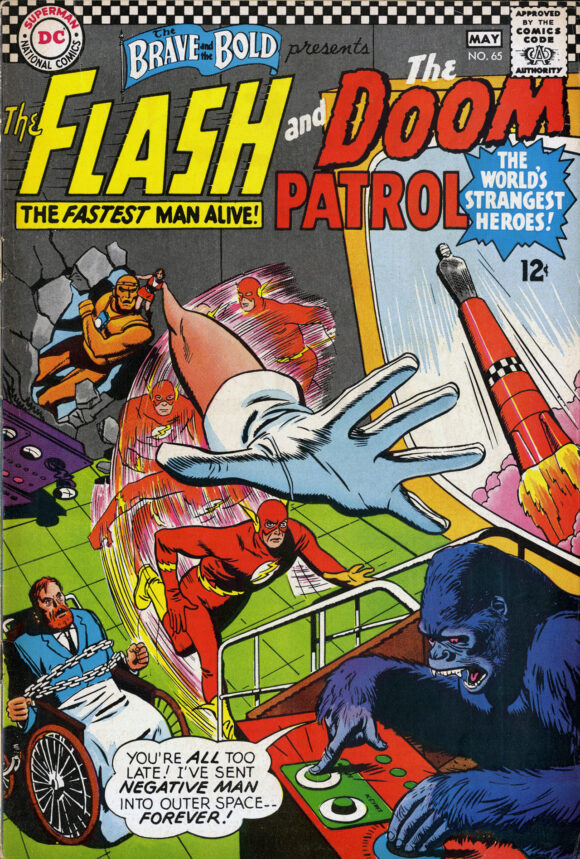
The Brave and the Bold #65 (Apr.-May 1966) – Bruno Premiani
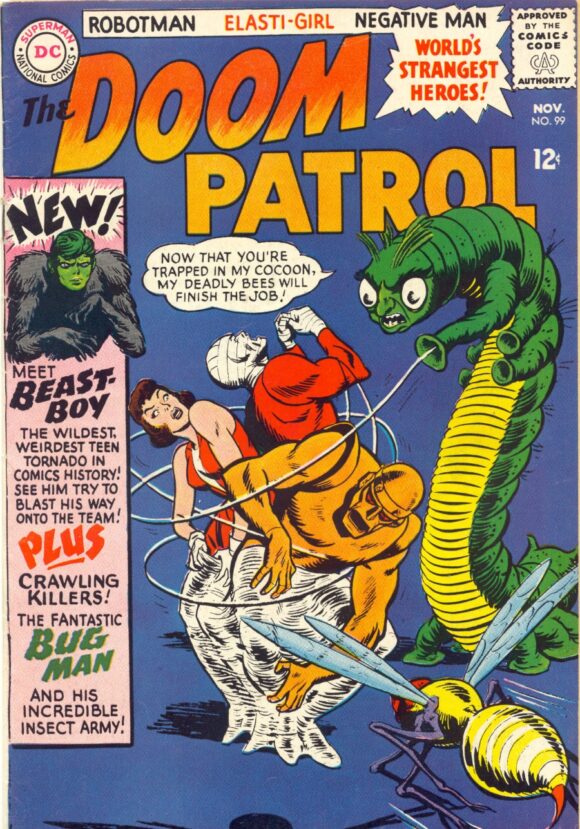
The Doom Patrol #99 (Nov. 1965) – Bob Brown
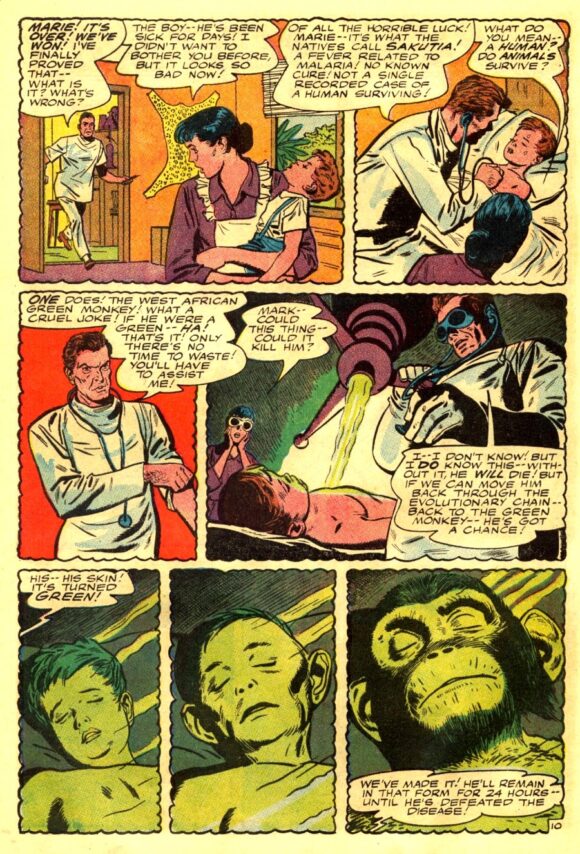
The Doom Patrol #100 (Dec. 1965) – “The Fantastic Origin of Beast Boy” – Script: Arnold Drake; Art: Bruno Premiani

Teen Titans #6 (Nov.-Dec. 1966) – Nick Cardy
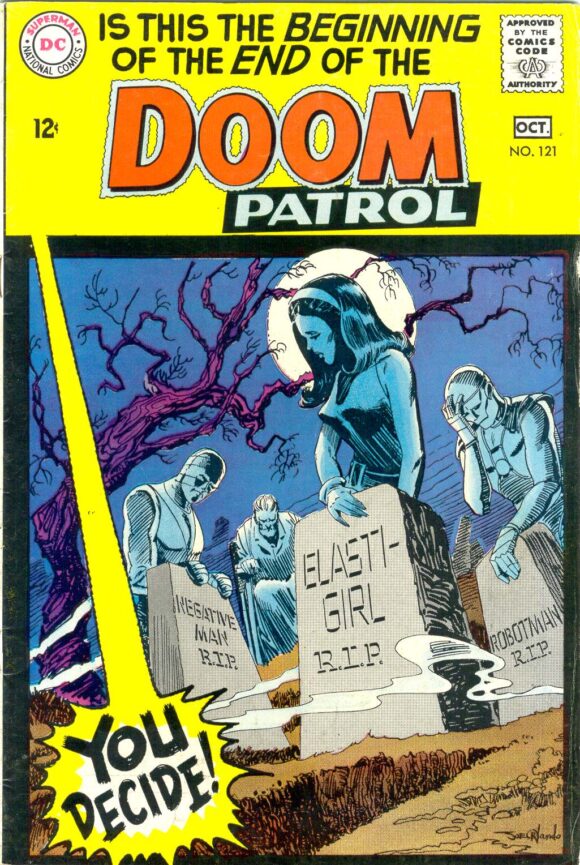
Doom Patrol #121 (Sept.-Oct. 1968) – Joe Orlando
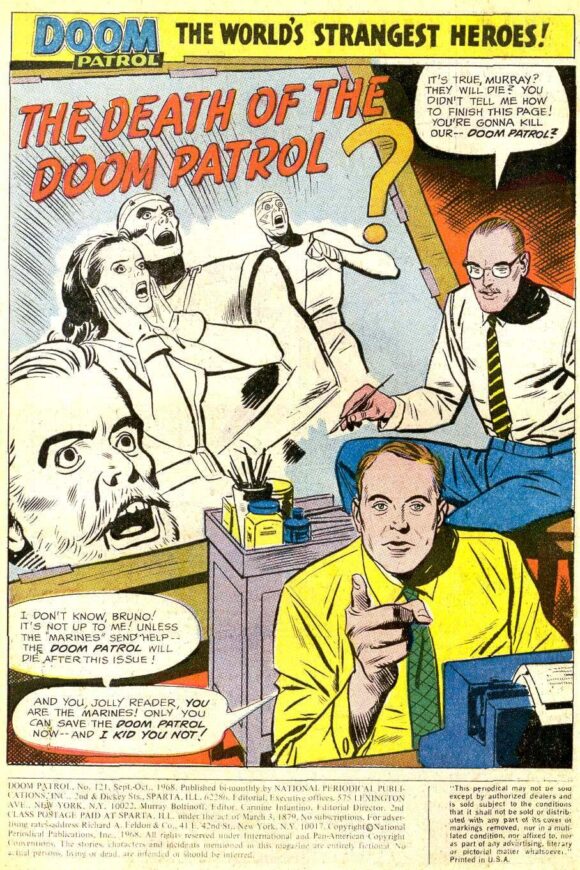
Doom Patrol #121 (Sept.-Oct. 1968) – Script: Arnold Drake; Art: Bruno Premiani
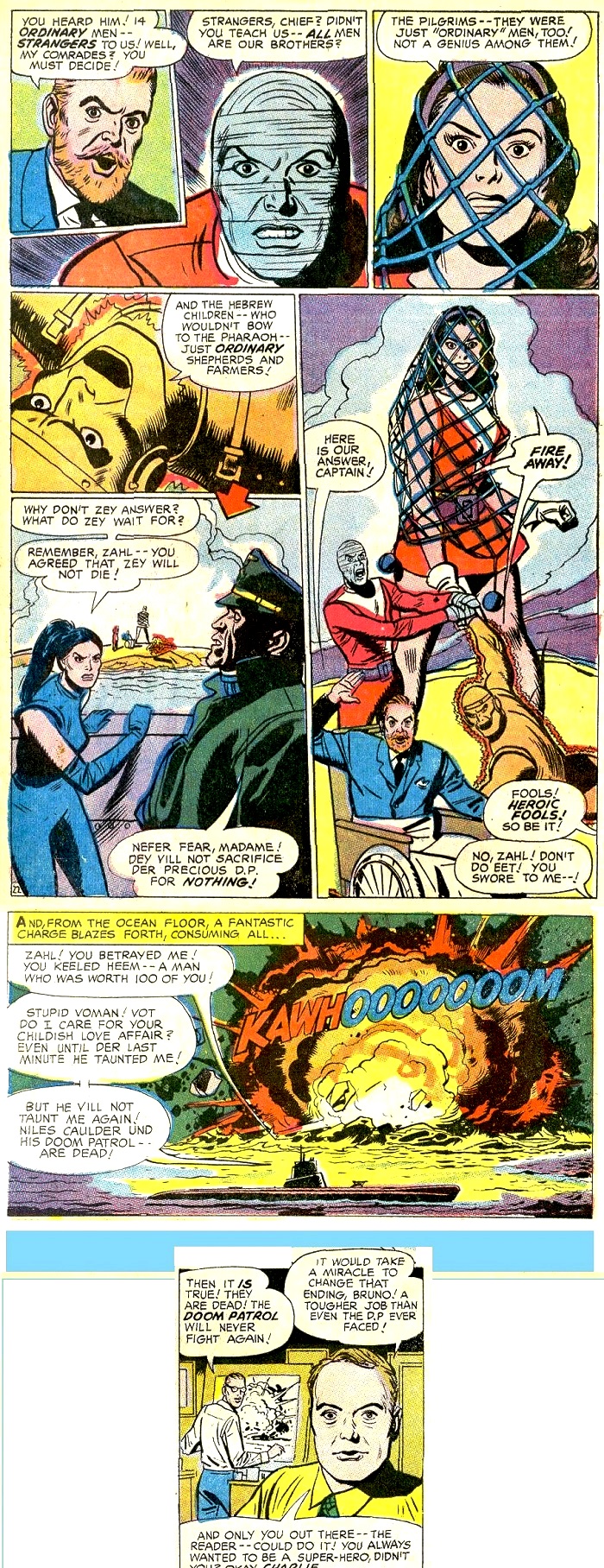
Doom Patrol #121 (Sept.-Oct. 1968) – Script: Arnold Drake; Art: Bruno Premiani
—
MORE
— DOOM PATROL AT 60: DC to Re-Release MY GREATEST ADVENTURE #80 as Facsimile Edition. Click here.
— COMIC BOOK DEATH MATCH: X-Men vs. Doom Patrol. Click here.
—
13th Dimension contributor-at-large PETER BOSCH’s first book, American TV Comic Books: 1940s-1980s – From the Small Screen to the Printed Page, has just been published by TwoMorrows. He has written articles and conducted celebrity interviews for various magazines and newspapers. Peter lives in Hollywood.


May 15, 2023
Those Byrne entries in the Who’s Who bring me back… Otherwise I’m too young for most of this Doom Patrol history reason. Love it tho, and loved the show.